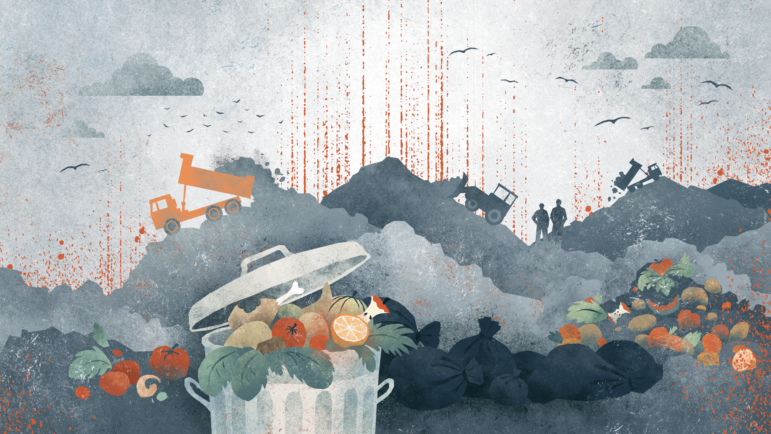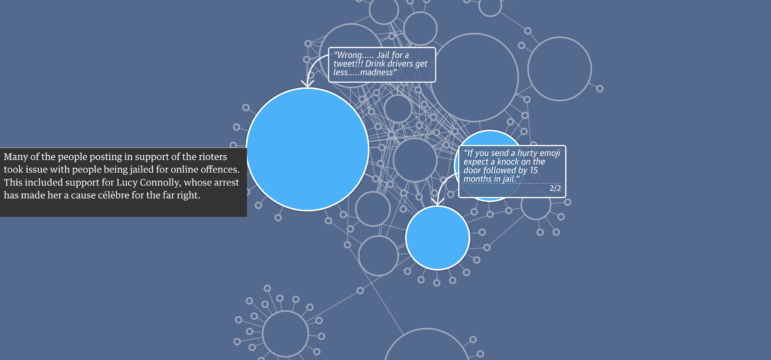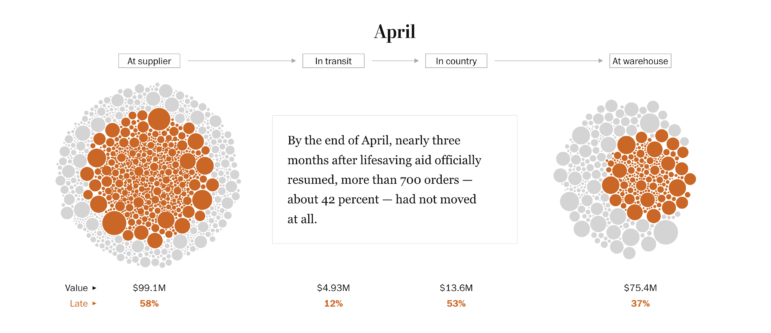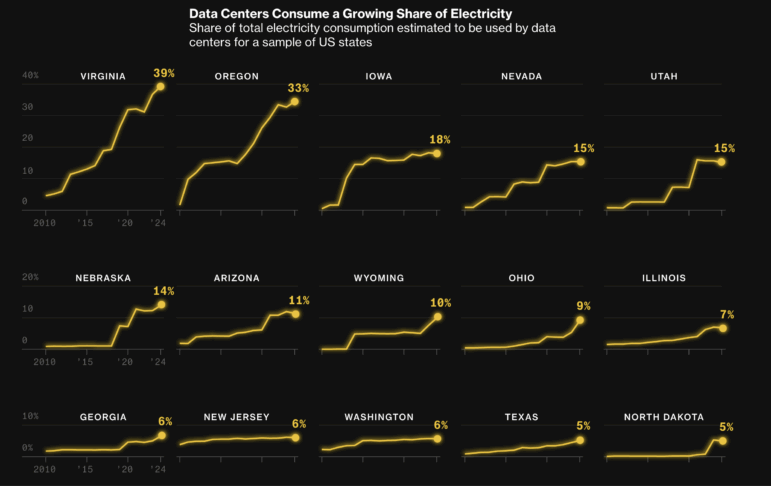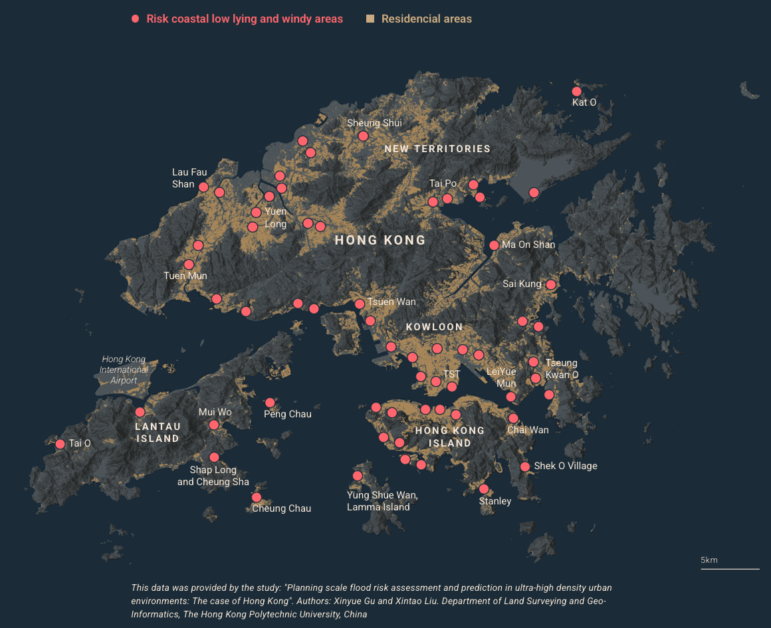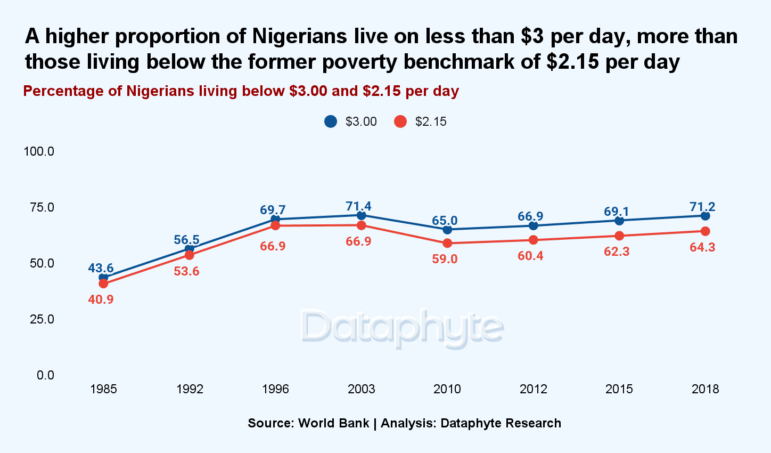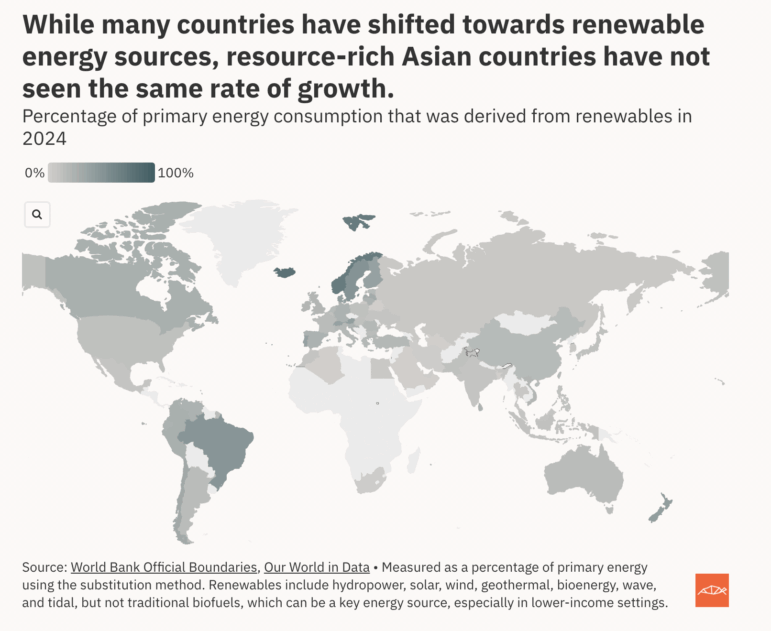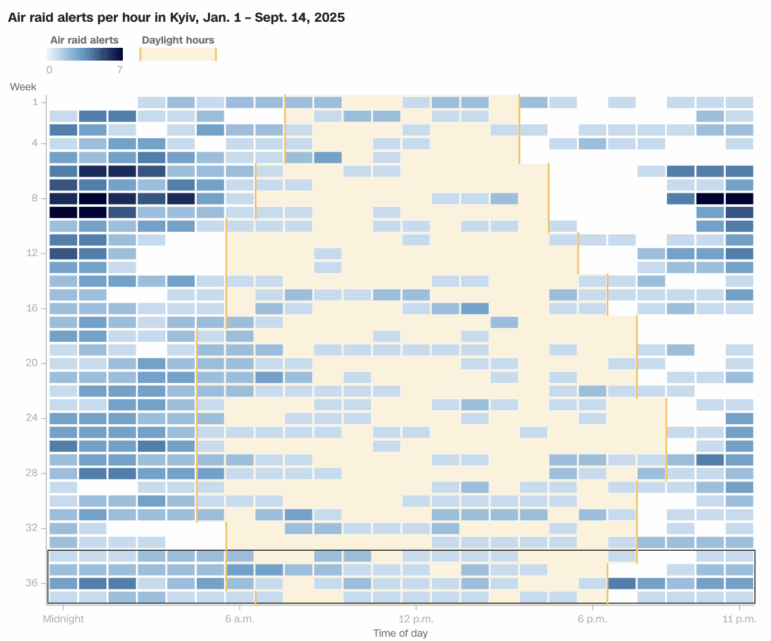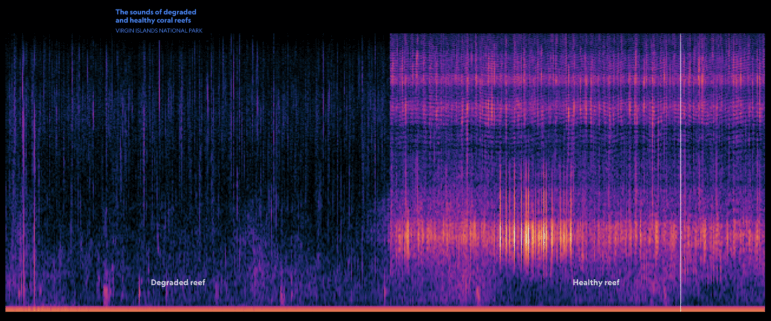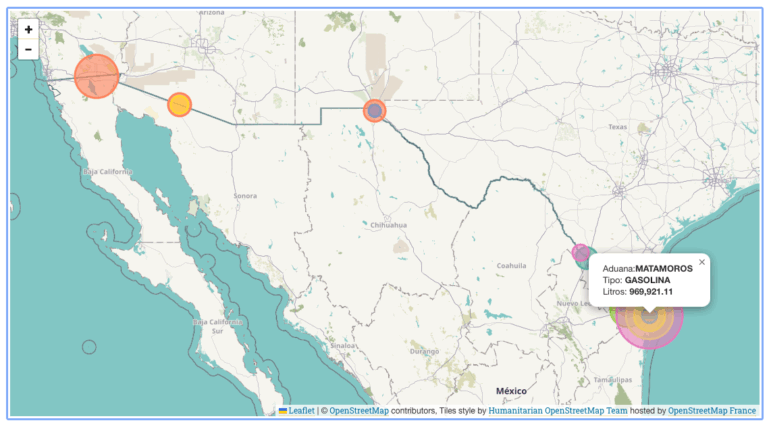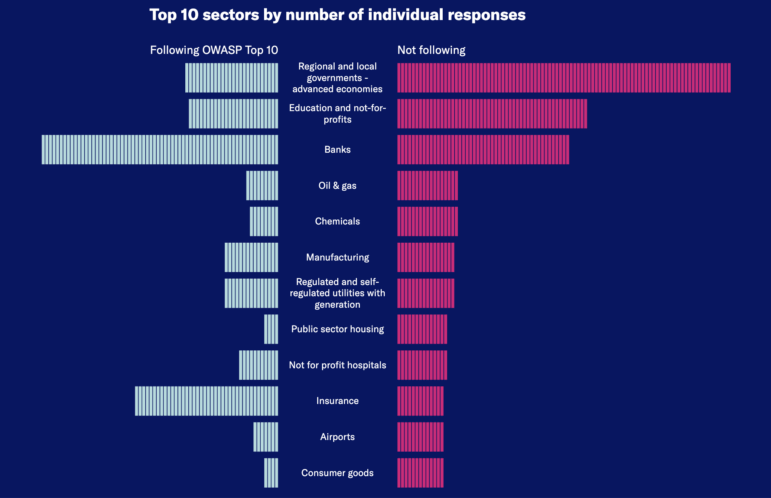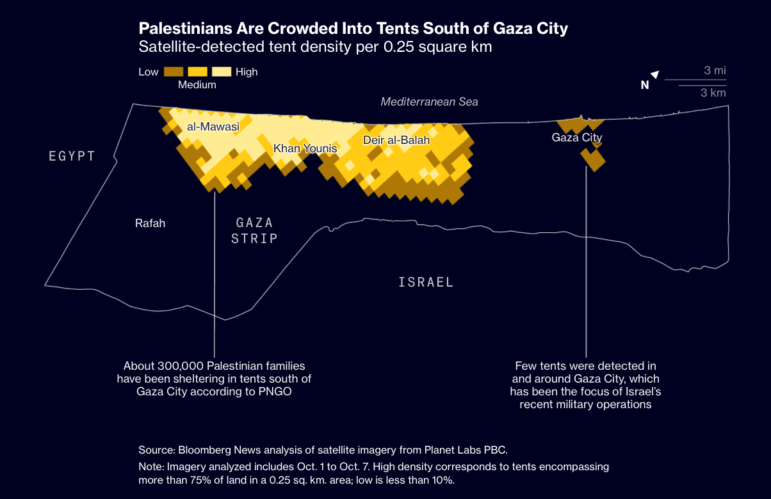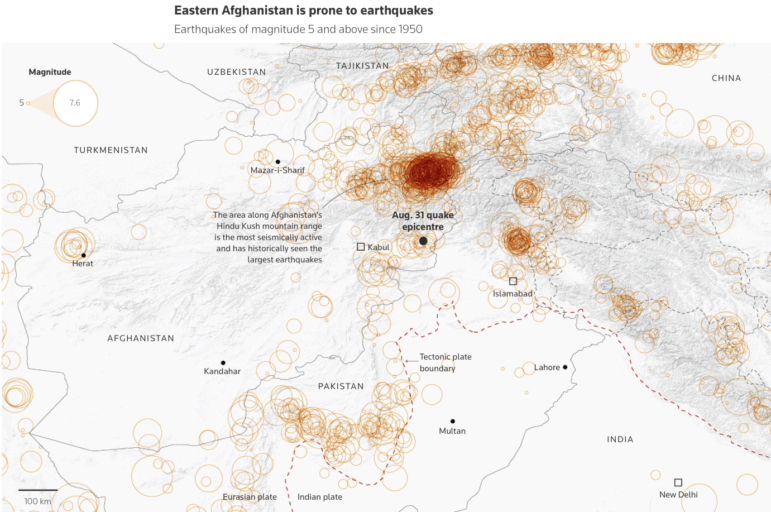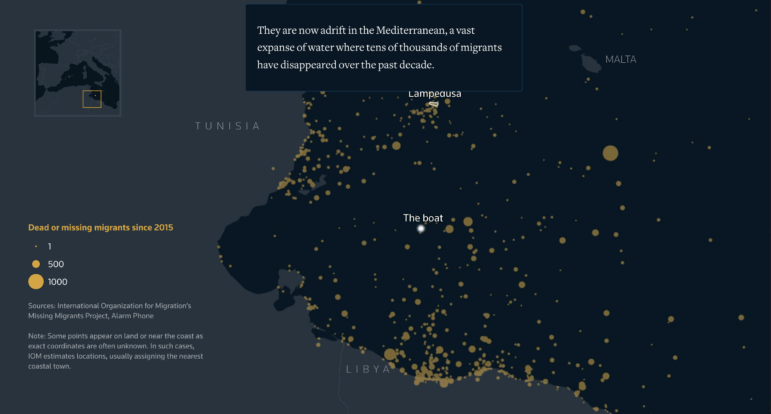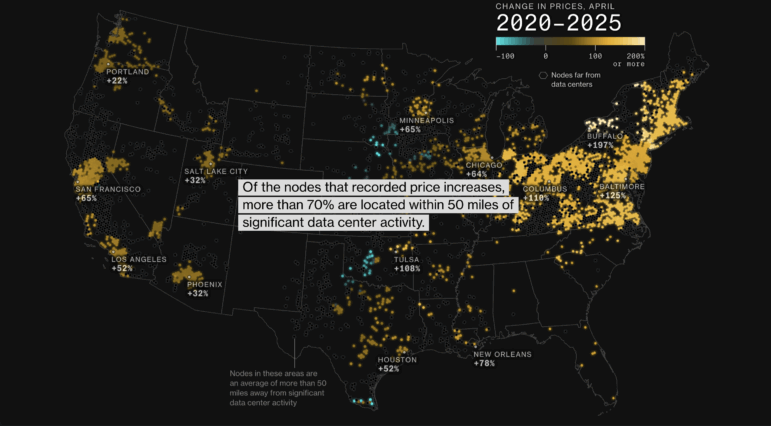

Image: Screenshot, Bloomberg
Data Centers’ Impact on Utility Prices, UK’s Far-Right Online, Fatal Consequences of USAID Cuts, Drone Strikes on Kyiv
A year-long project by the Guardian delved into the world of anti-immigration Facebook groups, finding that they played a central role in radicalizing users during the UK’s 2024 summer riots. In this edition of our Data Journalism Top 10, covering stories from September 17 to October 1, we also share a Washington Post investigation on the impact of Trump’s USAID freezes, a piece from Bloomberg that mapped the relationship between AI data centers and electricity demand, and a visual story by the South China Morning Post that illustrated the impact of a Category 10 typhoon on Hong Kong using 3D modeling and archive photography.
Investigating Far-Right Rhetoric in UK Facebook Groups
This in-depth Guardian investigation into online anti-immigration networks found that Facebook groups played a central role in radicalizing users during the UK’s 2024 summer riots. The unrest followed an attack in which three young girls were killed at a dance school. False claims spread online at the time about the alleged perpetrator, sparking widespread protests, and some social media users incited violence by calling for attacks on hotels where asylum-seekers were housed. Reporters decided to trace the social media activity of those later charged with online offenses related to the incident. They found five individuals linked to Facebook groups with 267,000 members, and a wider network of 16 interconnected groups where content was reaching more than 600,000 people. To understand the influence of these spaces, the Guardian used a large language model to analyze 51,000 posts from the largest groups before, during, and after the riots, and human reviewers to categorize content that could be classed as being anti-immigration, displaying the hallmarks of nativism, anti-establishment sentiment, or that descended into the demonization of migrants. The findings revealed that one in 25 posts carried far-right identity denial (“I’m not far-right, I’m just right”), while other findings underscored the overlap between misinformation, online mobilization, and broader far-right ideology.
Trump’s USAID Pause Left Many Without Lifesaving Drugs
Soon after taking office, US President Donald Trump signed an executive order halting foreign aid programs pending a 90-day review. The sweeping freeze suspended the Global Health Supply Chain Program — an initiative that delivers antimalarial and HIV medicines worldwide. An investigation by The Washington Post used internal USAID datasets that showed the status of shipments for the first half of 2025. The analysis examined only orders that were supposed to resume after the Trump administration considered them to be lifesaving, and only orders that were scheduled to be delivered by late June. It showed that of $190 million in planned shipments, nearly $76 million never arrived and another $63 million were delayed by more than seven days. In one province in Congo, where a child died from malaria, even as medication that could have helped treat her was stuck in a nearby distribution warehouse, malaria deaths nearly tripled during this period. Reporters interviewed more than 20 officials and contractors and conducted on-the-ground reporting in Congo to document the human toll, with a Lancet study warning that if the cuts are not reversed, they could contribute to more than 14 million preventable deaths by 2030.
Soaring US Electricity Prices and AI Data Centers
The demand for power for data centers across the US is soaring — and putting pressure on consumers across the country. Bloomberg analyzed wholesale electricity prices to understand the impact of AI data center proliferation on the power grid. The team of reporters compared prices in 2020 with those in 2025 — and found that in areas near significant data center activity, wholesale electricity prices rose as much as 267% in a single month. After analyzing 25,000 “grid nodes” they found that more than 70% of those showing price increases were located within 50 miles of data center activity. With data centers forecast to account for 9% of all power demand by 2035, the reporters said the “unprecedented granularity” of their data showed what is at stake for those living nearby.
Measuring Vulnerability to Typhoons in Hong Kong
Hong Kong’s typhoon season runs from May to November, with five to six storms typically approaching within 800 km (480 miles) of the city each year. In late September, Super Typhoon Ragasa — the world’s most powerful tropical cyclone this year — brought hurricane-force winds and widespread destruction to southern China and neighboring countries. Ahead of landfall, the South China Morning Post (SCMP) visualized the potential impact of a Category 10 typhoon — the most severe classification — on Hong Kong. Drawing on data from the Hong Kong Observatory, ventusky.com, Hong Kong Polytechnic University, the SCMP Archive, and the city’s Labour Department, the team compared historical typhoons by category, created 3D models to illustrate how storms form, and mapped low-lying and windy areas to identify vulnerable zones. While typhoons have historically been deadly, improved safety measures mean even Category 10 storms are now far less likely to cause fatalities.
More In Nigeria Now Classed as Living Below the Poverty Line
In June, the World Bank revised the global poverty line from US$2.15 to $3 per person per day based on the latest purchasing power parity data, a statistical change that means that millions more people will now be classified as living in poverty. Dataphyte analyzed how exchange rates and food inflation affect households in Nigeria. Drawing on data between December 2023 to December 2024, its analysis revealed that as the naira currency weakened, the cost of a “healthy diet” nearly doubled, while food inflation rose 40% Even when the exchange rate improved slightly, prices remained elevated. Using these indicators, journalists visualized the direct impact of macroeconomic shifts on everyday food costs and poverty, showing how households struggle to meet basic needs and how now even more Nigerians are now classified as living below the poverty line.
The Cost of Transitioning to Clean Energy in Asia
Asia has huge reserves of minerals such as nickel, cobalt, and lithium, which are essential for the green energy transition, but mining and extraction often produce environmental harm while much of the economic benefit flows elsewhere. Using data and insights from Fair Finance Asia’s 2024 report, Kontinentalist examined the social and environmental impacts of mineral extraction, including reported attacks on local community members, Indigenous peoples, and environmental activists fighting against the impacts of transition minerals mining. Using case studies in the Philippines and Indonesia, the site also examined national policies and industry plans and their impacts. The piece also included an interactive quiz, which provides a deeper understanding of Asia’s mineral resources and their role in the global energy transition.
Drone Attacks Surging in Kyiv
CNN analysis of Russian air attacks shows that drone launches into Ukraine have become more frequent since Moscow expanded their production at the start of the year. A recent barrage of airstrikes saw more than 800 drones and 13 missiles launched in one night, killing at least 11 civilians. Journalists at CNN examined data from Ukrainian authorities showing instances of air raid alerts at a given hour, and data from the Center for Strategic and International Studies to chart daily drone launches into Ukraine by Russia. Kyiv has experienced more than 1,800 alerts since the invasion began in February 2022. By analyzing trends over time, and using a time-series heat map, journalists found that while attacks were previously concentrated at night, daytime threats have surged in recent weeks, with Kyiv residents experiencing an increase of air raid alarms.
How Bioacoustics Reveal Changes in the Natural World
National Geographic explored how bioacoustics — the study of animal sounds — can reveal the health of ecosystems and guide conservation efforts. Using continuous recordings in remote locations, researchers tracked species presence, population changes, and shifts in vocalization patterns, uncovering how drought, deforestation, and climate change are altering natural soundscapes. In one notable study, scientists at the Woods Hole Oceanographic Institution tested whether coral larvae use sound to locate healthy reefs. By playing recordings of thriving reefs via solar-powered underwater speakers near degraded sites in the US Virgin Islands, larvae settled two to seven times more frequently than in silent areas, demonstrating how acoustic monitoring can both diagnose environmental stress and support restoration efforts. The audio interactive story used spectrograms to compare the sounds of a dying coral reef to a healthy one, revealing the difference the environment plays on animals.
Mexico’s Fuel Smuggling Problem
Journalists at Serendipia used seizure data and transparency requests, including information from the National Customs Agency, to investigate fuel theft in Mexico involving criminal groups secretly extracting diesel and gasoline from Pemex pipelines. Stolen fuel is stored in large containers and documented under generic descriptions to evade taxes, they report. Organized crime networks negotiate with officials and foreign trade agents to manipulate documentation and tariff classifications to smuggle the product across borders — all while allowing sellers to avoid taxes. It is then sold at below-market prices to gas stations, transportation fleets, and intermediaries, generating massive profits while costing the Mexican government an estimated 170 billion pesos annually (US$9.2 billion). Journalists found the northern border state of Tamaulipas was a hotspot for fuel smuggling, with nearly 2 million liters seized at the nearby Matamoros customs office since 2019. The investigation relied on sparse public data, government disclosures through information requests, and expert estimates, highlighting both the scale of the problem and the challenges of documenting it in the absence of a comprehensive public database.
AI in the Workplace — Unregulated or Not?
A Moody’s special report, drawing on responses from nearly 2,000 organizations in its 2025 Cyber Survey, found that a significant number of companies have no policies to oversee the safe use of artificial intelligence in the workplace. Close to aquarter of respondents (22%) reported having no AI governance frameworks, a gap that is particularly pronounced in the Asia Pacific region, where over a third of companies have yet to implement any restrictions. The survey also revealed that only 48% of local governments have enforced policies regulating AI tool usage. Moody’s analysis highlighted the risks posed by public AI platforms, such as OpenAI’s ChatGPT and Google Gemini, which process data on external servers, potentially exposing sensitive information and creating vulnerabilities around intellectual property, data control, and confidentiality. By systematically surveying organizations across regions and industries, Moody’s mapped gaps in AI governance, illustrating how inadequate oversight can lead to data breaches.
Hanna Duggal is a data journalist at AJ Labs, the data, visual storytelling, and experiments team of Al Jazeera and a GIJN contributor. She has reported on issues such as policing, surveillance, and protests using data, and reported for GIJN on data journalism in the Middle East, investigating algorithms onTikTok, and on using data to investigate tribal lands in the US.




